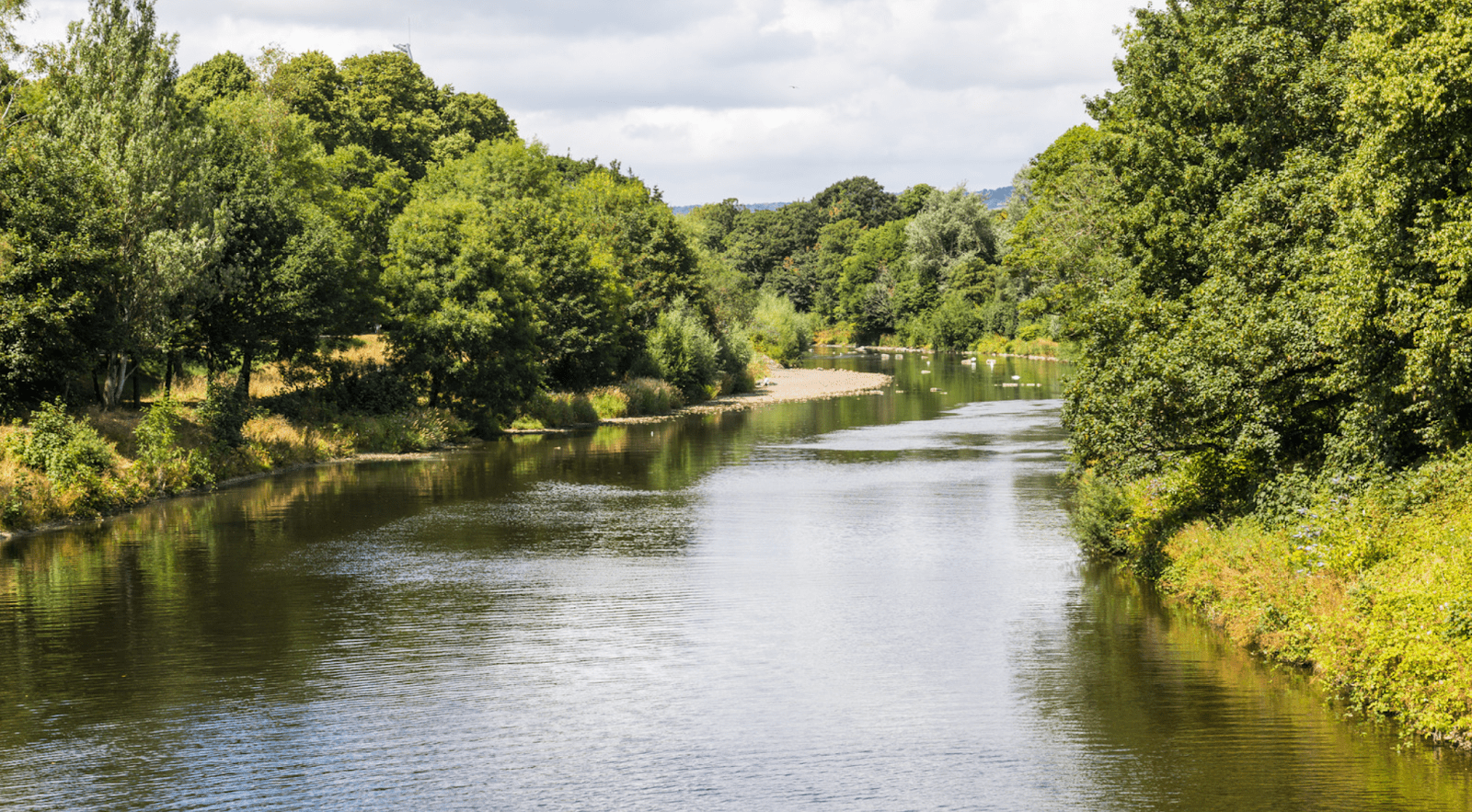Biodiversity Net Gain (BNG) has become an integral part of the UK planning process. As this approach becomes more widespread, it’s crucial to understand the types of applications to which Biodiversity Net Gain applies. In this blog, we’ll explore the various development types and planning applications where BNG is required, helping you prepare for your next project.

Understanding Biodiversity Net Gain
Before we delve into specific applications, let’s briefly recap what Biodiversity Net Gain entails. BNG is an approach to development that aims to leave biodiversity in a better state than before. Under the Environment Act 2021 and amendments to the Town and Country Planning Act, most developments will be required to deliver a minimum 10% increase in biodiversity value compared to the pre-development biodiversity value of the development site.
For the below application types, a full biodiversity gain plan will be required as part of the planning application. If granted, planning permission will include a condition for a detailed biodiversity gain plan to be submitted for approval. To meet these requirements, developers should also understand the difference between BNG units and BNG credits, which affects how biodiversity value is measured and compensated. This plan should demonstrate how the development will achieve the mandatory 10% biodiversity net gain, detailing both the pre-development biodiversity value and the post-development biodiversity value. Whilst not required, submitting a draft biodiversity gain plan at the application stage will detail to the LPA what your intended route is from the outset and allow them to comment if they are likely to be in agreement with your finalised plan.
Types of Applications Subject to Biodiversity Net Gain
1. Major Developments
Major developments are at the forefront of BNG requirements. These typically include:
- Residential developments of 10 dwellings or more
- Residential developments on sites of 0.5 hectares or larger
- Non-residential developments with a floor space of 1,000 square meters or more
- Developments on sites of 1 hectare or larger
2. Minor Developments (from 2nd April 2024)
Minor developments are not exempt from BNG requirements. These include:
- Residential developments of 1-9 dwellings
- Non-residential developments with a floor space under 1,000 square meters
For minor developments, developers will need to demonstrate how they’re enhancing biodiversity. Local planning authorities may have specific guidance for minor developments in their area.
3. Outline Planning Applications
Outline planning applications, which establish the principle of development without fully detailed plans, are also subject to BNG requirements. At this stage, applicants should provide:
- An initial assessment of the site’s biodiversity value
- A strategy for achieving biodiversity net gain
- Commitment to submitting a detailed biodiversity gain plan at the reserved matters stage
4. Full Planning Applications
Full planning applications for developments subject to BNG will need to include a comprehensive biodiversity gain plan. This should detail:
- The pre-development biodiversity value of the site
- The proposed post-development biodiversity value
- How the 10% net gain will be achieved
- Plans for long-term management and monitoring
5. Reserved Matters Applications
For outline permissions granted after BNG becomes mandatory, reserved matters applications will need to include a detailed biodiversity gain plan if not already submitted. This should align with the strategy outlined at the outline stage and demonstrate how the biodiversity gain objective will be met.
6. Retrospective Applications
While the specifics are still being finalised, it’s likely that retrospective planning applications (those made after development has commenced or completed) will also need to comply with BNG requirements. This could involve retrospective habitat creation or enhancement to offset any habitat loss.
7. Listed Building Consent
Applications for listed building consent may not directly require BNG. However, if the works also require planning permission (e.g., for an extension), then BNG would apply to that aspect of the project.
8. Change of Use Applications
Change-of-use applications that require planning permission will generally be subject to BNG requirements. This is particularly relevant where the change of use involves physical alterations that could impact biodiversity.
9. Minerals and Waste Developments
Minerals and waste developments often have significant potential for biodiversity enhancement. These applications will typically require a biodiversity gain plan, with opportunities for creating valuable habitats as part of site restoration.
10. Nationally Significant Infrastructure Projects (NSIPs)
The Biodiversity Net Gain (BNG) requirement for Nationally Significant Infrastructure Projects (NSIPs) in England is due to be implemented in November 2025. While the specific requirements are still being finalised, it’s expected that NSIPs will need to demonstrate biodiversity net gain, possibly with modified criteria.
Special Considerations
Phased Developments
For phased developments, BNG requirements may apply differently:
- Each phase might need to demonstrate biodiversity net gain independently
- An overarching BNG strategy could be developed for the entire project
- The approach may vary depending on the local planning authority and the nature of the development
Small Sites
Small sites are not exempt from BNG requirements. A 10% net gain will still need to be demonstrated regardless of the site size. Local authorities might offer guidance on approaches for very small developments, but the core requirement remains.
Brownfield Sites
Brownfield or previously developed sites are not exempt from BNG. It’s important to note that while some brownfield sites may have lower existing biodiversity value, others can support rare species and priority habitats with a much higher baseline. Each site needs to be assessed individually to determine its true biodiversity value.
Irreplaceable Habitats
Development proposals affecting irreplaceable habitats are subject to special considerations. While BNG still applies, there may be additional requirements or restrictions due to the unique nature of these habitats.
The Role of Local Planning Authorities
While national legislation sets the framework for BNG, local planning authorities have significant discretion in how they apply these requirements. Some may:
- Set higher targets than the national 10% minimum
- Have specific requirements for certain types of development or areas
- Offer guidance on preferred approaches to achieving BNG, such as prioritising onsite habitat creation
Always check with the relevant local planning authority for their specific policies and requirements, as these may be reflected in emerging local plans or supplementary planning documents.
Biodiversity Gain Plans
For most applications subject to BNG, a biodiversity gain plan will be required. If granted, planning permission will include a condition for a detailed biodiversity gain plan to be submitted for approval. This should include:
- Information about the steps taken to minimise adverse effects on habitats
- The pre-development biodiversity value
- The proposed post-development biodiversity value
- Any registered off-site biodiversity gains allocated to the development
- Any biodiversity credits purchased for the development
Off-Site Biodiversity Gains and Statutory Biodiversity Credits
Where on-site measures are insufficient to achieve the required net gain, developers may need to consider off-site biodiversity gains. This could involve enhancing biodiversity on other land or purchasing biodiversity units from a third-party provider.
As a last resort in the biodiversity gain hierarchy, developers may have the option to purchase statutory biodiversity credits from the government. These will be available when on-site and off-site options have been exhausted.
Exemptions and Modified Requirements
While this blog focuses on applications where BNG applies, it’s worth noting that there are some exemptions and modified requirements, including:
- Permitted development
- Householder applications
- Developments below the ‘threshold’
- Self-build and custom housebuilding projects
- Urgent crown development
However, even for these types of development, considering biodiversity enhancement can bring benefits and may be encouraged by local authorities.
Embracing Biodiversity Net Gain Across Development Types
As we’ve explored, Biodiversity Net Gain applies to a wide range of planning applications, from major residential developments to changes of use. While the specific requirements may vary, the underlying principle remains constant: development should leave biodiversity in a better state than before.
BNG represents not just a regulatory requirement, but an opportunity. It’s a chance to create developments that are more sustainable, more resilient, and more in harmony with the natural world. By integrating biodiversity considerations from the earliest stages of planning, we can create places that are better for both people and wildlife.
The application of BNG to such a wide range of development types reflects the growing recognition of the critical role biodiversity plays in our environment, our economy, and our well-being. It challenges us to think differently about development and to see our projects not as isolated from nature but as part of a wider ecological network.
As the implementation of BNG continues to evolve, staying informed and prepared will be key. Whether you’re planning a major infrastructure project or a small-scale development, understanding how BNG applies to your application is crucial. By working with ecological experts and local planning authorities, developers can navigate the complexities of BNG and turn potential challenges into opportunities for innovation and positive impact.


